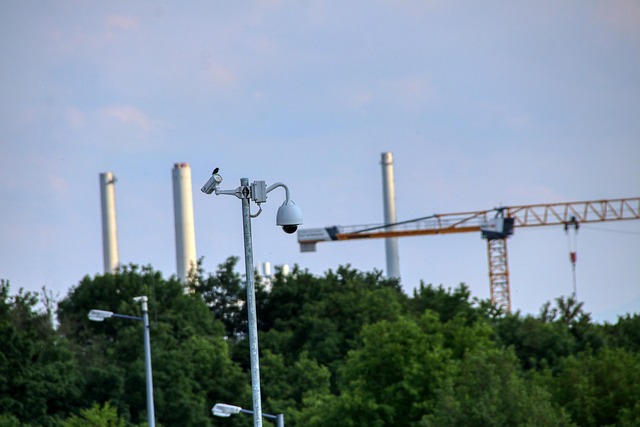Water line leaks, often unnoticed, cause significant damage and expensive repairs. Advanced leak detection technologies using sensors, radar, and data analytics offer faster, more precise solutions compared to traditional methods. These innovative approaches save time, reduce costs, and minimize environmental impact, ensuring efficient water infrastructure management. Future advancements in AI and IoT promise even proactive leak prevention.
Water line leaks are a pervasive and costly issue, impacting homes and businesses alike. This article delves into the world of leak detection, exploring common causes and effects of water line leaks. We compare traditional methods with advanced technologies, highlighting non-invasive techniques that preserve infrastructure without disruption. Through case studies, we demonstrate successful leak detection missions, and look ahead to future trends in water line leak prevention, providing a comprehensive guide for both professionals and property owners alike.
Understanding Water Line Leaks: Common Causes and Effects

Water line leaks are a common plumbing issue that can go unnoticed for extended periods, leading to significant damage and costly repairs. Understanding the causes and effects is crucial for prompt leak detection. Common causes include aging pipes, corrosion, faulty joints, or damage during construction or installation. Over time, these vulnerabilities can weaken the integrity of water lines, resulting in leaks at connections, valves, or even small cracks in the piping.
The effects of a water line leak are far-reaching. Initially, it may present as a subtle increase in water bills or a faint dripping sound. However, left unattended, leaks can lead to substantial water waste, mold growth, and structural damage due to water infiltration. In residential settings, leaks might affect individual rooms, causing floor or ceiling stains, while commercial buildings could face more widespread issues, impacting entire sections of the facility. Effective leak detection is key to mitigating these potential disasters.
Traditional Leak Detection Methods: Pros and Cons

Traditional leak detection methods have relied on a combination of visual inspection, manual testing, and time-consuming processes. One common approach involves using odour detection, where professionals can identify leaks by their distinct chemical odours. However, this method is not only limited to trained staff but also depends on the presence of odours, which may not always be noticeable. Another traditional technique is pressure monitoring, where changes in water pressure are tracked to pinpoint leaks, but it requires complex equipment and specialized knowledge.
The main advantages of these methods include their reliance on proven science and technology. They have been effective in many scenarios over the years. However, they present several challenges: they can be labour-intensive, time-consuming, and may not always detect leaks early enough to prevent significant damage or water waste. Moreover, traditional methods often struggle with accurate localisation of leaks within complex piping systems, requiring extensive digging or disruptions to infrastructure.
Advanced Technology in Leak Detection: A Revolution in Precision

In the realm of water line leak detection, advanced technology has revolutionized precision and efficiency. Traditional methods, often involving invasive processes and lengthy inspections, have been superseded by innovative solutions that offer faster, more accurate results. Modern techniques leverage sophisticated sensors, smart pipes, and data analytics to pinpoint leaks with unprecedented specificity. These technologies can detect even the smallest droplets of water seeping into pipelines, enabling immediate action to prevent significant damage and waste.
The use of smart sensors embedded in water infrastructure allows for continuous monitoring, providing real-time data that helps utilities predict and prevent potential issues before they escalate. Additionally, advanced analytics platforms interpret this data, identifying patterns and anomalies that signal leak activity with remarkable accuracy. This shift towards high-tech solutions not only enhances the efficiency of leak detection but also reduces costs associated with repairs and water loss, making it a game-changer in the field of plumbing and water management.
Non-Invasive Techniques: Preserving Infrastructure Without Disruption

Non-invasive techniques in leak detection offer a highly effective way to preserve water infrastructure without causing any disruption. These advanced methods allow for accurate identification of leaks, be it in pipes, reservoirs, or treatment plants, without the need for digging or physical intrusion. By utilizing technology such as ground-penetrating radar (GPR), infrared thermography, and acoustic wave analysis, professionals can pinpoint leak locations with remarkable precision.
This approach not only saves time and reduces costs associated with traditional invasive methods but also minimizes potential damage to surrounding structures and environments. Moreover, non-invasive techniques enable continuous monitoring, ensuring early detection of even the smallest leaks, which is crucial for maintaining water system efficiency and integrity.
Case Studies: Successful Leak Detection Missions

In the dynamic landscape of water infrastructure management, successful leak detection missions stand as testament to the effectiveness of advanced technologies and strategic methodologies. Case studies from around the globe highlight the impact of implementing robust leak detection systems. For instance, a recent project in a major metropolitan area involved a comprehensive survey of an aging water main network using smart acoustic sensors and ground-penetrating radar. This multi-faceted approach revealed numerous leaks that had gone undetected through traditional methods, leading to significant savings in repair costs and minimal disruption to local communities.
Another notable success story comes from a rural community where a leak detection team employed non-invasive imaging technology to map the underground water lines. This method allowed them to pinpoint specific leak locations with remarkable accuracy, enabling swift repairs and preventing further contamination of nearby water sources. These examples underscore the importance of tailored leak detection strategies, leveraging cutting-edge technologies to ensure the longevity and efficiency of water distribution systems worldwide.
Future Trends: Predicting Innovations in Water Line Leak Prevention

As technology advances, the future of water line leak detection is poised for significant innovation. AI and machine learning algorithms have the potential to revolutionize this field by analyzing vast datasets to predict potential leaks before they occur. By studying historical data on pipeline conditions, weather patterns, and usage trends, these technologies can identify anomalies and pinpoint areas at higher risk. This proactive approach promises more efficient leak prevention strategies.
Additionally, the integration of Internet of Things (IoT) devices will further enhance leak detection capabilities. Smart sensors embedded in water pipelines can continuously monitor pressure, flow rates, and other vital signs, transmitting real-time data to central systems. This enables faster response times and more precise leak localization, minimizing damage and disruptions caused by leaks. These future trends paint a promising picture for an advanced and proactive water line leak detection system.
